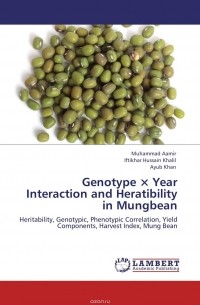Muhammad Aamir — новинки
-
Genotype ? Year Interaction and Heratibility in Mungbean AYUB KHAN, Muhammad Aamir, Iftikhar Hussain Khalil
ISBN: 9783659110306 Год издания: 2012 Издательство: LAP LAMBERT Academic Publishing Язык: Английский Pakistan being an agricultural country is facing shortage of pulses. Major pulses grown in Pakistan include desi chickpeas (gram), lentils (masur), mung beans, black matpe (mash beans), and dry peas whole (matter). Other pulses include kabuli chickpeas, and kidney beans. The indigenous production doesn’t meet the pulses requirement of the country. Imports account for about 37% of Pakistan’s total consumption of pulses. In 2010, imports of pulses totaled 445,000 tons, valued at $262 million compared to 280,000 tons in fiscal year 2009, valued at $236 million. The situation is further aggravated due to the mushrooming growth in population and inflation rate. This gigantic drain on our hard-earned foreign exchange resources is a great challenge for agricultural scientists and all allied stalk holders. Among the pulses crops, mung bean emerged a potential pulses crop that can minimize the gap between production and consumption. The book in hand can furnish useful information for agriculture scientists and growers. -
Drying of fruits and vegetables Muhammad Hanif, Muhammad Aamir
ISBN: 9783659248795 Год издания: 2012 Издательство: LAP LAMBERT Academic Publishing Язык: Английский A high performance parabolic trough solar collector was developed during this study and was used for drying of vegetables and fruits. The materials used are easily available in the markets and included steel sheet with high power of reflecting light, steel pipe, angle iron and fully insulated drying box. The concentrating collector was a tilted at 34°south (Equivalent to the latitude of Peshawar). The concentrating reflector has a reflecting surface area of 2.9 m2 and focal length of 0.17 m. The length and width of the collector were 2.4 m and 1.21 m, respectively. The absorber having a surface of 0.376 m2 was fixed in front of the reflector at the distance equal to focal length. The heated air was flowing through fan from absorber tube to drying box. The maximum temperature of the absorber was 140 oC. The drying box was a 1 m x 0.57 m x 0.55 m box fully insulated. All Fruits and vegetable were dried with high air flow rate (1.72 kg.min-1). Efficiency was determined by taking the ratio of heat available at the collector in


